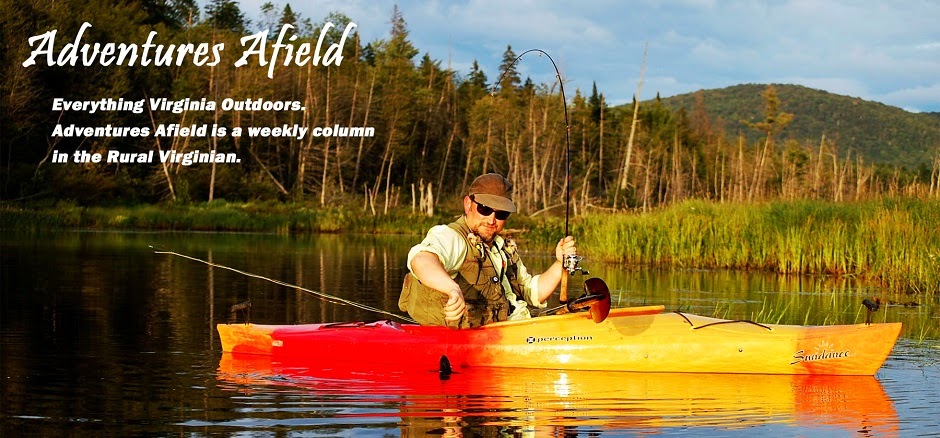Many people have a favorite president. I won’t say I do.
A light rain fell in the night. Just like the day before, partly-sunny skies
were forecast; but the sky forecast something different—heavy clouds, fog, and
drizzle—typical November. Under this
cover, my brother and I loaded the truck with waders, rods, and daypacks, and
headed north towards the Blue Ridge Mountains.
 |
| Photo by Matt Reilly |
The river was in good condition, running
full, thanks to recent rain.
Water
in the mid-50s, and overcast, drizzly weather had me searching for my favorite
nymph pattern—the CK nymph. I found the
smallest, buggiest imitation, with stray hackle fibers and a meager body, and tied
it on.
With this weapon ready for action, I did my
best to assume the role of a predator.
On hands and knees, I edged towards a sizeable boulder overlooking the
tail of a promising pool. The first cast
landed somewhat sloppily in the current rushing past a smaller, undercut
boulder. Nothing. I sent a second cast, more refined and
floating, to the deep channel in the middle of the pool where the current began
to relax.
My fly line hesitated in the current for a
split second, and a raised rod tip excited a brilliantly-colored brook trout,
maybe five inches long, and lifted him from the slick water.
My reaction was fast, and my body warmed
with the excitement of my first brook trout in several months of absence from
the water. I netted the fish, and
admired his spawning colors—the white-banded fins bordered with black, the fiery
belly, the red and blue bulls-eyes on his flanks, the marbled green back that
makes him invisible from above.
After releasing the fish, I moved on until
I came upon a pool worthy of careful prospecting. Water fell heavy into the head of the pool, as
it was split in two by a sturdy boulder.
The water carved a two-foot deep pocket there, and ran out into the tail,
after wrapping around an undercut rock submerged in the current. I got into position.
“There has to be a fish on that rock,” I
thought.
But as I was taught, I placed my first
casts carefully in the tail of the pool, to avoid lining any cruising fish with
the colorful fly line. After meticulous
picking, I focused on the rock that tugged at my attention. Four casts, five, six, seven—nothing. After several casts, the current gripped the
line as it hovered over the rock, dragging my nymph into the undercut ledge.
An underwater flash jolted the line! My rod tip rose with my arm high into the air;
and I sprung from my hiding place behind a log as war ravaged.
 |
| Photo by Matt Reilly |
It’s a foreign concept to many outside the
world of fly fishing, to consider the gaunt brook trout of these small streams
to be worth the energy, briar cuts, and twisted ankles they demand. They’re precious gems in small, discreet
packages; and it’s a testament to their allure that the most powerful man in
America, living in relative proximity to the Adirondack trout streams, the
wilderness streams of West Virginia, the spring creeks of Pennsylvania, and the
steelhead of Lake Erie tributaries, chose a seemingly insignificant being in
Appalachian Virginia to be his host in his home away from home.
After several brief seconds, I slipped the
fish back into his icy domain. He left
my hand with a flick of his tail, as stately and as bold as the river tumbling
down the mountain. The spirit of such a
fish cannot be tamed, not by the President of the United States, nor any that
came after him; but its existence can be threatened, and I can rest easy
knowing that the popularity of the Rapidan River has bred respect for its
native trout.□
Originally published in the Rural Virginian


.JPG)

.JPG)






